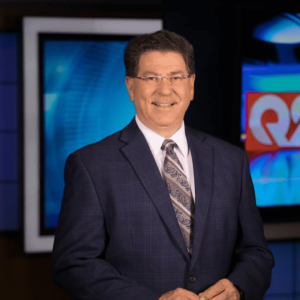Retired Air Force Colonel Ed Walby's home near Livingston, Montana, is like a museum for America's notorious U2 spy plane.
Letters from Presidents Reagan, Ford, and Bush congratulating Walby on his distinguished career adorn the walls. Photographs and memorabilia document Walby's time with the U2 program, and later as commander of the 99th Reconnaissance Squadron at Beale Air Base in California.
"Flying the U2 at 70,000 feet, you literally feel like you're on top of the world," said Walby. "You can see stars during the day."
Walby is the first to tell you that every flight in the U2 is special, but among his 1,000 hours in the cockpit, two missions stand out.
In March of 1989, Walby was at the controls when the U2 flew alongside the space shuttle during its launch. NASA wanted a closer look at what was damaging the shuttle's tiles.
"We have a point-and-click camera with really high resolution," said Walby. "So I fly the first mission and the shuttle goes zipping by, I'm inside five miles, and what we do is point the camera and shoot, shoot, shoot as the shuttle goes by to see if we could catch any debris."
Due to the shuttle's launch speed and flight path, however, Walby was unable to use the U2's auto pilot system. It's what happened next that Walby remembers the most.
"As soon as the shuttle passed by I look up and I was about 60 degrees, nose high at about 40 knots, which is about 40 miles per hour under my stall speed," recalled Walby. "The plane was just hanging there, and started to fall. I said to myself, don't do anything because whatever you do, it can't be right. So I let the airplane slice through the horizon, lost about four thousand feet, and the airplane regained speed. Had I done anything, I probably would have been at the bottom of the ocean with the camera."
Later that day at his debriefing, Walby learned that during the launch of the space shuttle, chunks of molten solid propellant are ejected from the shuttle engines, chunks the size of Volkswagens. With a grin, Walby recalled telling his commanders that information would have been good to know - prior to flying that mission.
"It was really fun to be within five miles of the shuttle zooming by at Mach 2," Walby said. "I'm sitting there in my pressure suit, fat, dumb, and happy, taking pictures and enjoying the scenery."
One of Walby's proudest moments came during the early days of the war in Afghanistan in December of 2001. As commander of the 99th Reconnaissance Squadron, Walby had deployed with the Global Hawk Program, the U2's drone counterpart. "The Marines were coming up the valley and the bad guys had lined the ridge and were going to ambush our guys," said Walby. "Using our infrared we saw that these guys were there and we were able to warn the Marines, and they were able to get away."
It was at that battle of Tora Bora that the Global Hawk first proved its mettle in a real-life combat scenario. It was a huge milestone for the program that many believed would someday replace the U2.
Walby believes both the U2 and the unmanned Global Hawk have a place in the U.S. intelligence-gathering arsenal, as they complement each other. While the U2 can put eyes in the sky anywhere, anytime, the Global Hawk can fly almost forever.
"The unique part about Global Hawk is it's computer-controlled," said Walby. "You're not flying it with a joystick, you're just telling it where to go. The computer takes off and flies, you just give it direction. Or you can pre-program it to take any course you want. You can actually launch the airplane, walk away and it will come back the next day."
As we wrapped up our discussion about his career with the U2, I thanked Col. Walby for his service and he invited us back to reminisce another day. After all, as he told me in a recent email:"Old pilots love to talk about themselves."
We are thankful he chose to share his story with us.
RELATED: Montana U2 pilot describes flying at the edge of space



